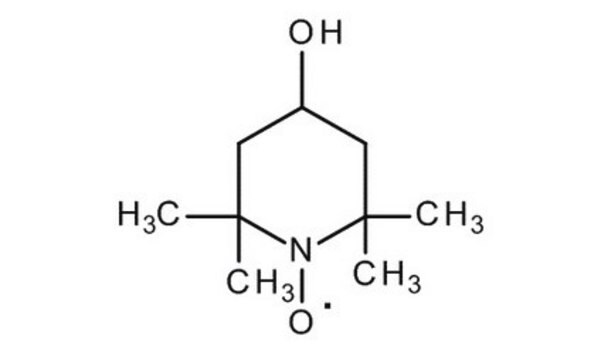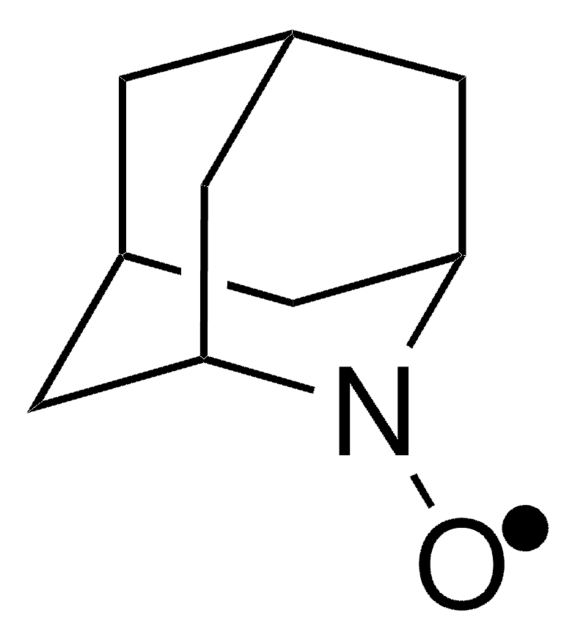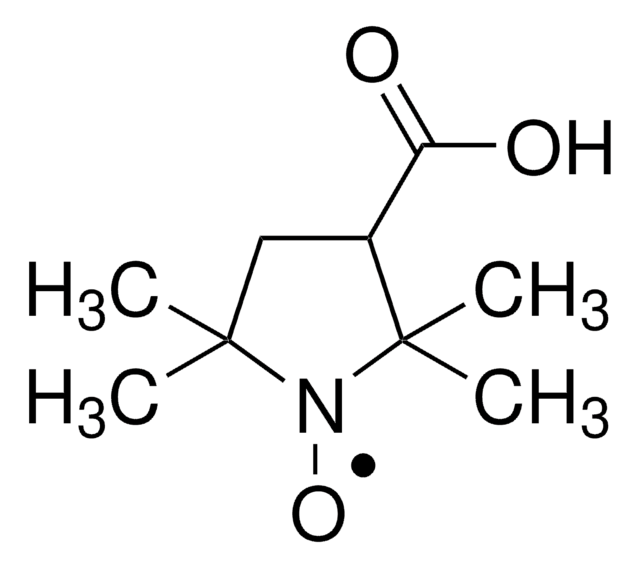179485
4-Oxo-TEMPO
Synonym(s):
4-Oxo-2,2,6,6-tetramethyl-1-piperidinyloxy, free radical
About This Item
Recommended Products
form
solid
Quality Level
functional group
ketone
storage temp.
2-8°C
SMILES string
CC1(C)CC(=O)CC(C)(C)N1[O]
InChI
1S/C9H16NO2/c1-8(2)5-7(11)6-9(3,4)10(8)12/h5-6H2,1-4H3
InChI key
WSGDRFHJFJRSFY-UHFFFAOYSA-N
General description
Application
- Redox sources for anodes in lithium secondary batteries
- Free-radical biological studies
- Radical spin-trapping
- Electron paramagnetic resonance studies
- Polymer chemisty and synthesis applications
Signal Word
Warning
Hazard Statements
Precautionary Statements
Hazard Classifications
Aquatic Acute 1
Storage Class Code
11 - Combustible Solids
WGK
WGK 3
Flash Point(F)
Not applicable
Flash Point(C)
Not applicable
Personal Protective Equipment
Choose from one of the most recent versions:
Already Own This Product?
Find documentation for the products that you have recently purchased in the Document Library.
Customers Also Viewed
Articles
TEMPO (2,2,6,6-Tetramethylpiperidinyloxy or 2,2,6,6-Tetramethylpiperidine 1-oxyl) and its derivatives are stable nitroxy radicals used as catalysts in organic oxidation reactions. TEMPO was discovered by Lebedev and Kazarnovskii in 1960. The stable free radical nature of TEMPO is due to the presence of bulky substituent groups, which hinder the reaction of the free radical with other molecules.
Our team of scientists has experience in all areas of research including Life Science, Material Science, Chemical Synthesis, Chromatography, Analytical and many others.
Contact Technical Service





![9-Azabicyclo[3.3.1]nonane N-oxyl 95%](/deepweb/assets/sigmaaldrich/product/structures/287/155/e2f4a2e1-1d4e-4bed-9187-9e16d23cbbbf/640/e2f4a2e1-1d4e-4bed-9187-9e16d23cbbbf.png)




